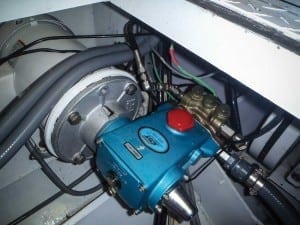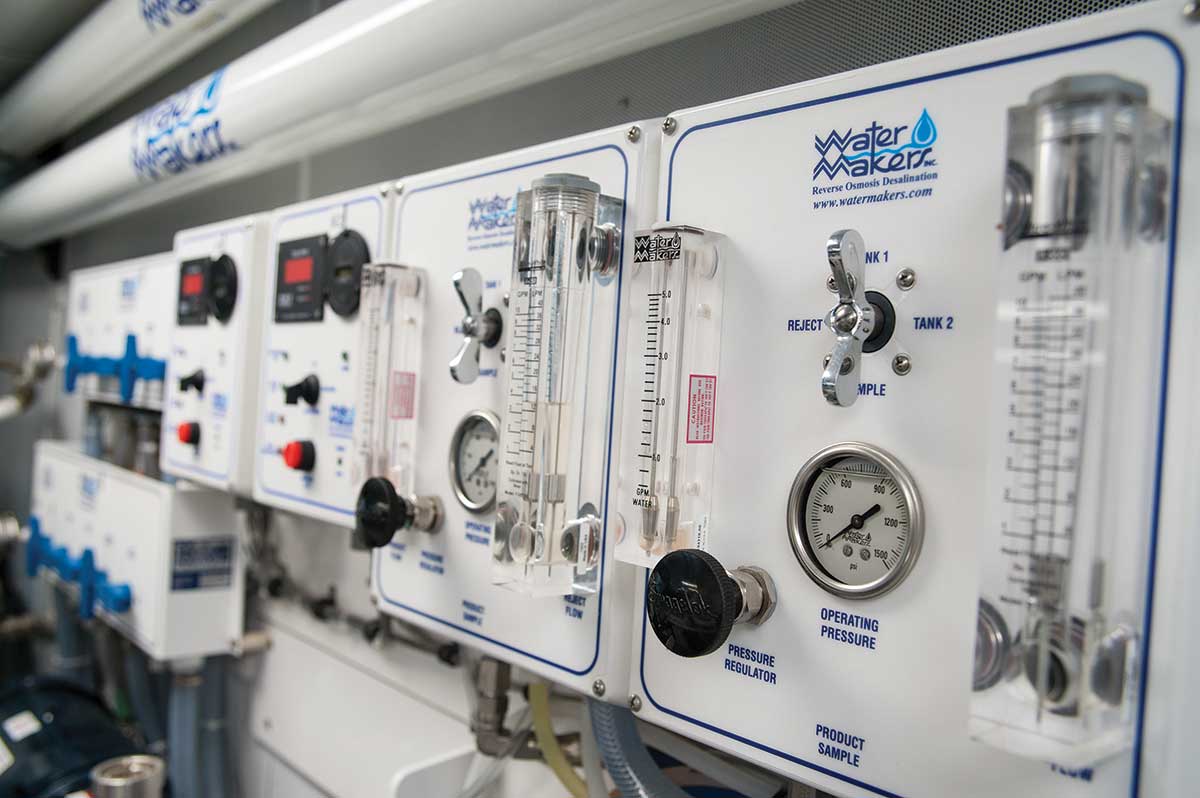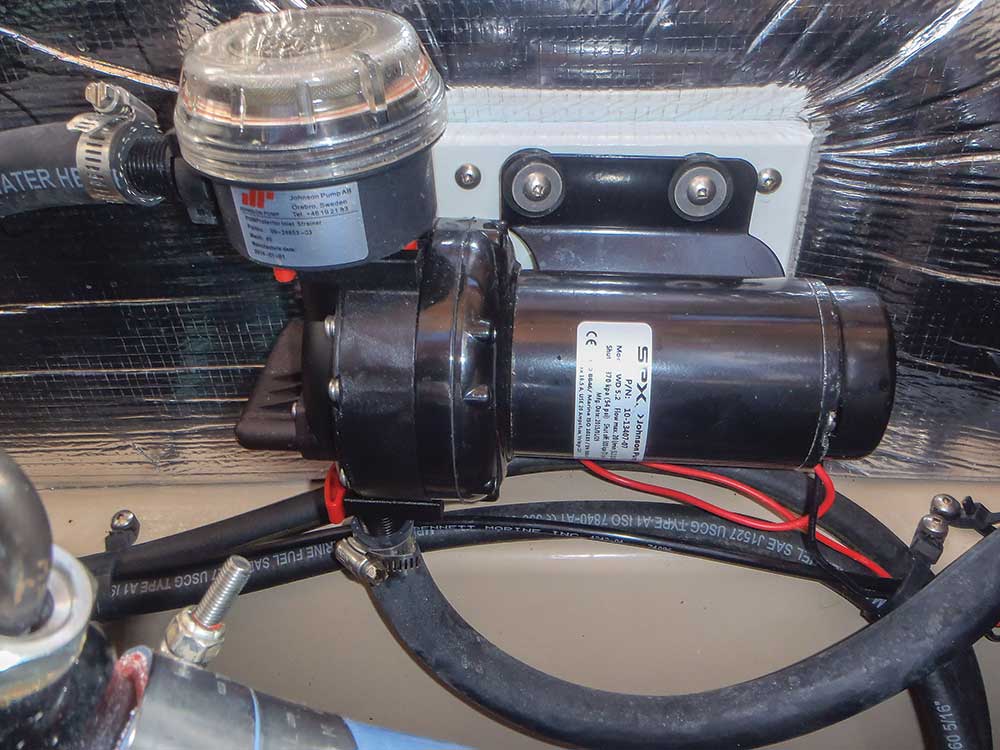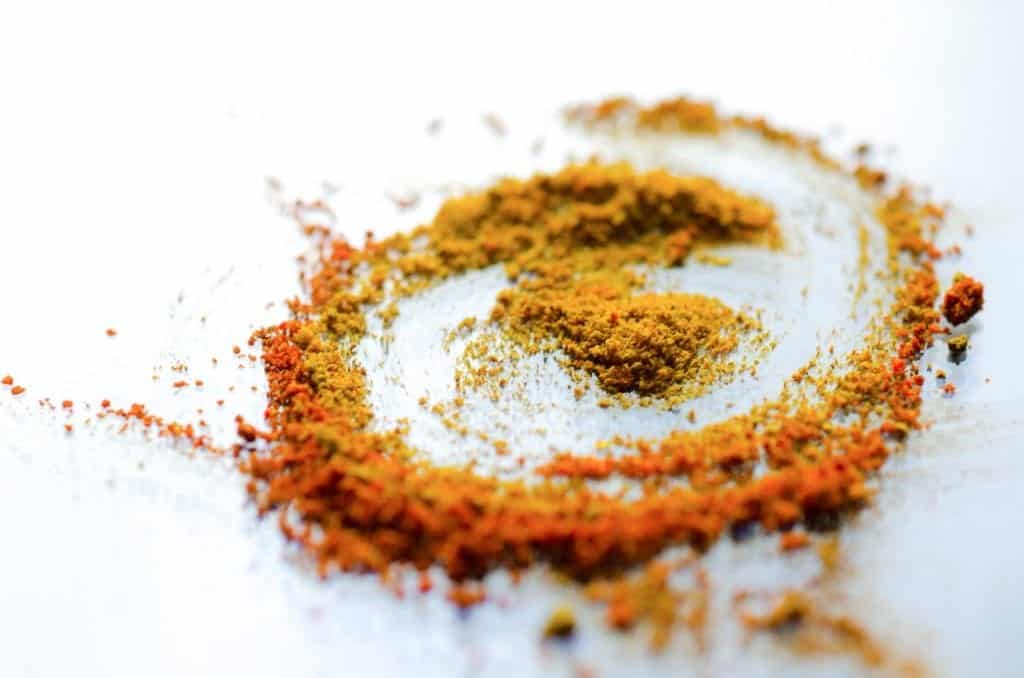“Water, water, everywhere, and all the boards did shrink. Water, water, everywhere, nor any drop to drink.”
I can’t read those lines from the seafaring classic The Rime of the Ancient Mariner without thinking “Those guys sure could’ve used a watermaker!” But owning a watermaker is only half the equation. Like any onboard mechanical system, a reverse osmosis (RO) unit requires routine maintenance to ensure proper operation. While the manufacturer should be consulted regarding maintenance requirements for your particular make or model, here are a few requirements that will be common to most any unit and help ensure yours runs smoothly.
How they work
In a nutshell, a watermaker or RO system uses a high-pressure pump to push saltwater (supply water) against a semi-permeable membrane reversing osmotic flow. A portion of the supply water (roughly 10 percent) passes through the membrane’s microscopic pores and emerges as freshwater, which is then pumped to the ship’s water tanks. The remaining 90 percent—along with the salt and other solids left behind by the desalinated water—are flushed away by excess supply water, which flows past the membrane and is pumped overboard.
Pre-filters
A watermaker’s supply side (between the seawater pickup and the membrane) consists of a low-pressure pump, pre-filters and a high-pressure pump. Most systems use two pre-filters, typically a 20 or 30-micron filter, followed by a 5-micron filter. As oil can quickly damage an RO membrane, many systems also include a supply water oil separation filter.
Watermakers need an ample flow of water to operate, which means keeping the pre-filters clean. If they begin to clog, supply pressure (and output) begins to drop. Most watermaker units have a gauge to monitor supply pressure. Regular monitoring and replacement of these filters will not only increase freshwater output but is also better for the RO unit itself in the long run.
In addition to the pre-filters, most manufacturers recommend the installation of a sea strainer at the supply water intake thru-hull. It should be sized to filter out anything larger than 50 microns or so. The strainer itself should be cleaned regularly as part of your routine maintenance schedule.
Membrane maintenance
The heart of your RO system is the membrane. Membrane life expectancy for a well-maintained system is around five years but can be much longer in systems that are used regularly and scrupulously maintained. While operating your system in water that’s blue or at least somewhat clear looking will help reduce maintenance and increase membrane service life, just as important to longevity is how well the system is maintained while not in use.
Most modern watermakers come with (or have the option to add) a manual or automatic membrane flushing system. This allows you to draw freshwater from the vessel’s water tank (typically weekly) and pump it through the membrane, purging the system of saltwater. When flushing, make sure the water used does not contain chlorine, which can quickly ruin your membrane. Use “product” water (i.e. water produced by the watermaker) whenever possible. If using water from your vessel’s freshwater tanks, make sure it is chlorine free. Systems that will be out of service for extended periods of time (six months or longer) should be flushed with a biocide per the manufacturer’s recommendations.
Pumps

The high- and low-pressure pumps in your system also require routine maintenance. Some may require oil changes and seal replacement every 500 hours or so, but many newer units can go significantly longer between service intervals, sometimes as high as 8,000 hours. Others can be water cooled and require no oil changes. The first place to look is the owner’s manual, which should specify the required maintenance items and intervals for your particular system.
Finally, use these simple tips:
Do…
- Keep the membrane wet. Allowing it to dry out will drastically reduce service life.
- Use the system regularly, even daily, if possible. (Watermakers hate inactivity.)
- Check the system routinely for leaks, corrosion, and other issues.
- Flush the system with fresh water after each use.
- Clean the pre-filters often, weekly if the system is used regularly.
- Install a supply line oil separation filter.
- Monitor the system daily while in use, and keep a log of output, water quality, etc.
- Preserve the membrane with biocide solution for longtime storage.
Don’t…
- Use the system in silty, oily or polluted water (harbors, for instance).
- Operate the system with insufficient supply water flow.
- Use chlorinated water to flush the system.
- Let the RO membrane(s) dry out.
- Clean the unit with harsh chemicals. Use soap and water or mild glass cleaners only.
— By Frank Lanier, Southern Boating Magazine January 2017














